In order to generate a more inclusive dataset of Pseudomonas genes mapped to putative in-paralogs and putative orthologs in other Pseudomonas species/strains, we developed a Pseudomonas Orthologous Groups classification system.
To generate ortholog groups, pair-wise DIAMOND searches were run on all genomes in the database to find reciprocal best hits (RBHs) for each gene. These analyses often resulted in multiple candidate genes for RBH status, which were narrowed down by examining the similarity between the query's flanking genes and the hit's flanking genes. If two candidate genes were directly adjacent, they where both accepted as RBHs that involve putative in-parology.
Pairwise intra-genome DIAMOND searches were also performed to acquire in-paralog information (i.e. gene duplications occurring after species divergence). If two genes in one genome were reciprocally more similar to each other than to any gene in the other genomes, the two genes were designated putative in-paralogs. Ortholog groups are built by starting with a seed gene and then adding all genes to which there is a RBH or in-paralog relationship.
Every new gene added to an ortholog group was then treated as a seed gene and the addition process was repeated until all qualifying genes had been added. The result was the development of orthologous groups, specifically generated for Pseudomonas species genomes, which can be used to sort search results.
Pseudomonas Ortholog Group POG001486
| Strain | Locus Tag | Description | Same-Strain Members | Fragment ? | |
|---|---|---|---|---|---|
| Pseudomonas trivialis IHBB745 | AA957_RS02415 |
ligand-gated channel
|
2 same-strain members: AA957_RS02415 AA957_RS28165 |

|
|
| Pseudomonas umsongensis 20MFCvi1.1 | D470_RS0101970 |
ligand-gated channel protein
|
1 member |

|
|
| Pseudomonas umsongensis UNC430CL58Col | N519_RS0127570 |
ligand-gated channel protein
|
2 same-strain members: N519_RS0127570 N519_RS0129365 |

|
|
| Pseudomonas umsongensis UNC430CL58Col | N519_RS0129365 |
TonB-dependent receptor
|
2 same-strain members: N519_RS0127570 N519_RS0129365 |
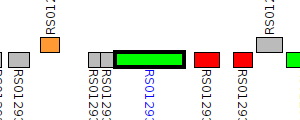
|
|
| Pseudomonas veronii 1YdBTEX2 | H736_RS0121140 |
TonB-denpendent receptor
|
3 same-strain members: H736_RS0110720 H736_RS0121140 H736_RS0125295 |
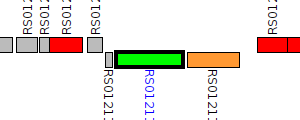
|
|
| Pseudomonas veronii 1YdBTEX2 | H736_RS0125295 |
amino acid ABC transporter substrate-binding protein
|
3 same-strain members: H736_RS0110720 H736_RS0121140 H736_RS0125295 |

|
|
| Pseudomonas veronii 1YdBTEX2 | H736_RS0110720 |
TonB-dependent receptor
|
3 same-strain members: H736_RS0110720 H736_RS0121140 H736_RS0125295 |

|
|
| Pseudomonas veronii R4 | SU91_RS16270 |
amino acid ABC transporter substrate-binding protein
|
3 same-strain members: SU91_RS16270 SU91_RS17740 SU91_RS18725 |
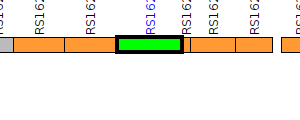
|
|
| Pseudomonas veronii R4 | SU91_RS17740 |
TonB-dependent receptor
|
3 same-strain members: SU91_RS16270 SU91_RS17740 SU91_RS18725 |
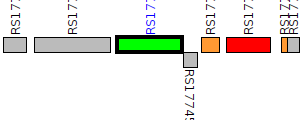
|
|
| Pseudomonas veronii R4 | SU91_RS18725 |
ligand-gated channel
|
3 same-strain members: SU91_RS16270 SU91_RS17740 SU91_RS18725 |

|
|
| Pseudomonas viridiflava LMCA8 | RT94_RS00825 |
TonB-dependent receptor
|
2 same-strain members: RT94_RS00825 RT94_RS25845 |
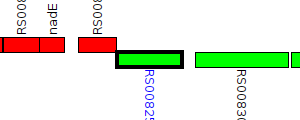
|
|
| Pseudomonas viridiflava LMCA8 | RT94_RS25845 |
ligand-gated channel
|
2 same-strain members: RT94_RS00825 RT94_RS25845 |

|
|
| Pseudomonas vranovensis DSM 16006 | H621_RS0100450 |
TonB-dependent receptor
|
3 same-strain members: H621_RS0100450 H621_RS0107200 H621_RS0125240 |
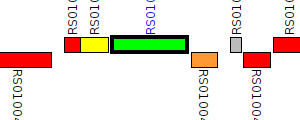
|
|
| Pseudomonas vranovensis DSM 16006 | H621_RS0107200 |
ligand-gated channel
|
3 same-strain members: H621_RS0100450 H621_RS0107200 H621_RS0125240 |

|
|
| Pseudomonas vranovensis DSM 16006 | H621_RS0125240 |
TonB-dependent receptor
|
3 same-strain members: H621_RS0100450 H621_RS0107200 H621_RS0125240 |

|
|
| Pseudomonas weihenstephanensis DSM 29166 | TU86_RS03470 |
ligand-gated channel
|
2 same-strain members: TU86_RS03470 TU86_RS10055 |

|
|
| Pseudomonas weihenstephanensis DSM 29166 | TU86_RS10055 |
ligand-gated channel
|
2 same-strain members: TU86_RS03470 TU86_RS10055 |
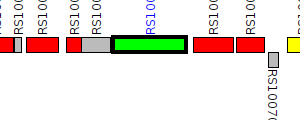
|